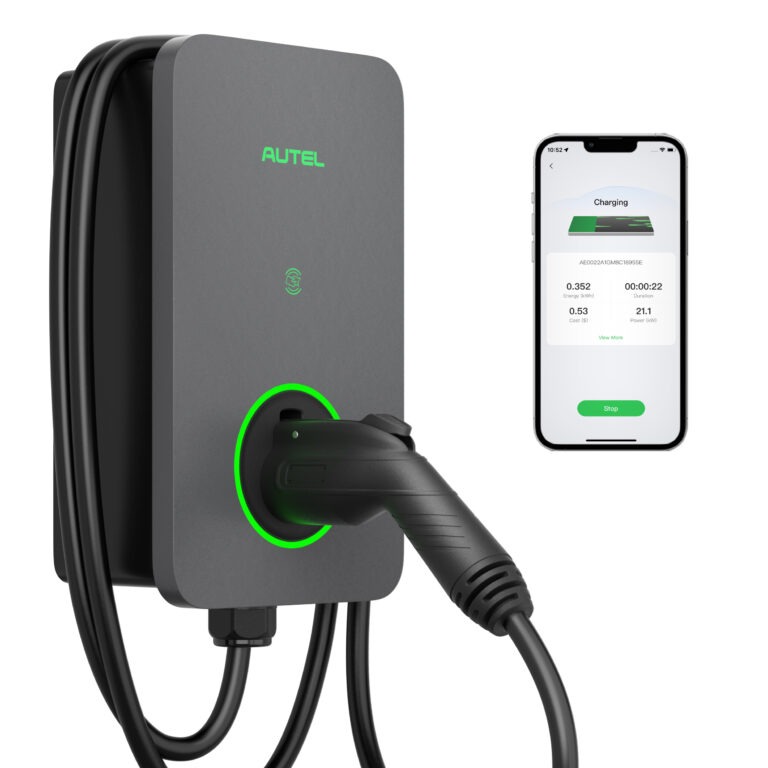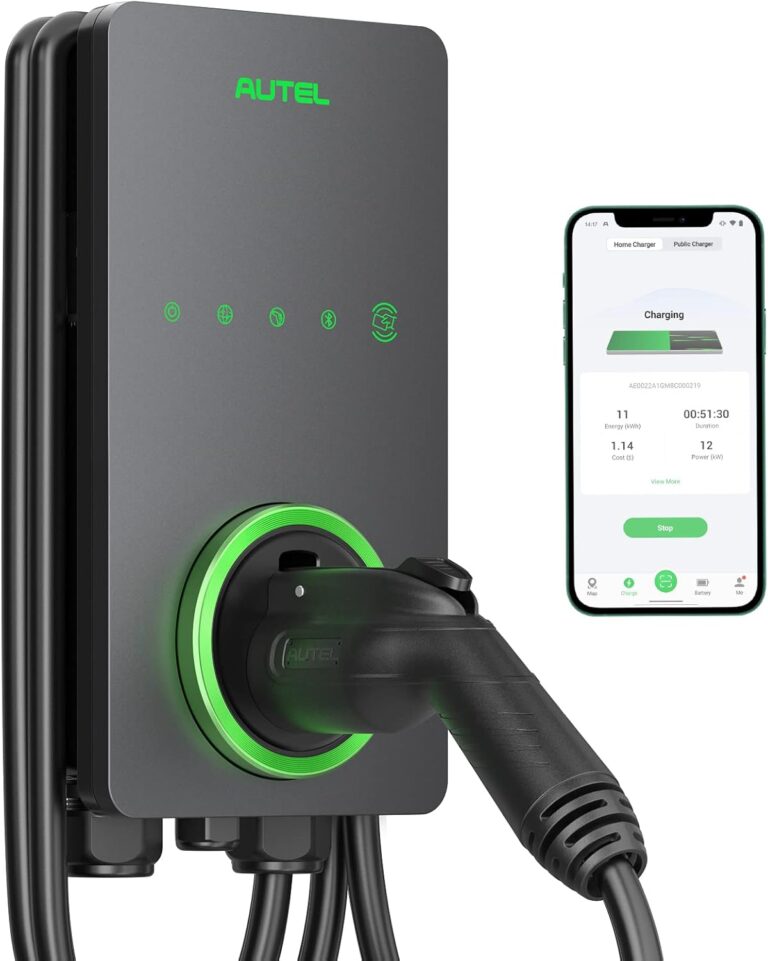ChargePoint Home Flex Review!
- Last Updated
- October 21, 2024
Home Flex Hardwired
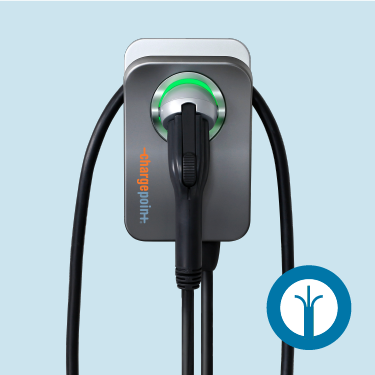
- Works with circuits rated from 20 to 80A
- Up to 50A of power for fast charging
- Best for outdoor install
- Available with both J1772 and NACS (Tesla) connectors.
Home Flex, NEMA 6-50 Plug
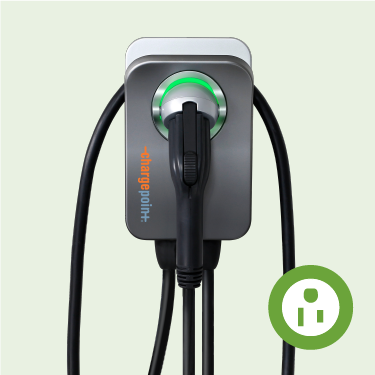
- Works with circuits rated from 40 to 50A
- Up to 40A of power (30 miles per hour)
- Easy to move to another 6-50 outlet
- Available with both J1772 and NACS (Tesla) connectors.
Home Flex, NEMA 14-50 Plug
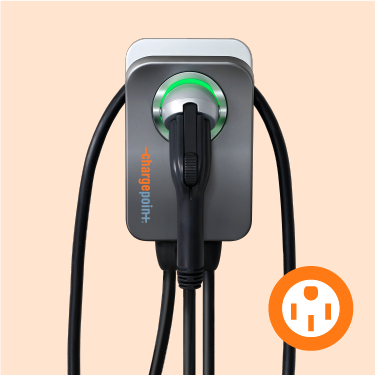
- Works with circuits rated from 40 to 50A
- Up to 40A of power (30 miles per hour)
- Easy to move to another 14-50 outlet
- Available with both J1772 and NACS (Tesla) connectors.
What We'll Cover In Our ChargePoint Home Flex Review
In our review of the ChargePoint Home Flex, we’ll cover everything from installation to charging performance, user experience, and overall functionality.
We’ll discuss both the plug-in and hardwired options, detailing electrical requirements and whether professional assistance is needed. We’ll then dive into the charging capabilities, including power output up to 12 kW, adjustable amperage settings, and compatibility with various electric vehicles, including Tesla.
We’ll also explore smart features like Wi-Fi connectivity, app control, scheduling, and energy tracking, as well as the charger’s durability, safety features, and flexibility in switching between J1772 and Tesla’s NACS connectors.
9/10
Performance 9/10
The ChargePoint Home Flex delivers impressive charging power of up to 50 amps, which allows for rapid Level 2 charging across a wide range of electric vehicles. Its adjustable amperage settings (from 16 to 50 amps) make it versatile and suitable for various home electrical capacities, ensuring efficient charging tailored to individual needs.
Smart Features 9/10
This charger is packed with smart features, including Wi-Fi connectivity, which allows users to control charging sessions through the ChargePoint app. Users can monitor charging in real-time, schedule charging during off-peak hours, and track energy usage, making it a great choice for tech-savvy EV owners.
Durability & Build 8/10
The Home Flex has a sturdy design and is rated for both indoor and outdoor use. Its weatherproof casing and high-quality materials enhance durability; however, some users might find the unit slightly bulkier compared to other models.
Value 9/10
Priced competitively for its performance and features, this EV charger offers great value, especially with its future-proof design that accommodates various EV standards. Its flexibility in installation options (plug-in or hardwired below) further enhances its appeal, making it a strong investment for many EV owners.
Table of Contents
Who Are ChargePoint?
ChargePoint, a California-based company, is famed for having the nation’s largest network of independently owned public EV charging stations. Founded in 2007, ChargePoint ventured into home charging in 2015 with its first home chargers. Among their standout products is the ChargePoint Home Flex, a Level 2 (240-volt) charger praised for its user-friendliness and adaptability, earning it the title of best overall smart home charger of 2023 for its competitive pricing and extensive features.
ChargePoint Flex 2 Dimensions
- Height: 12.2 inches (31 cm)
- Width: 6.6 inches (16.8 cm)
- Depth: 4.2 inches (10.7 cm)
- Weight: 18 pounds (8.2 kg)
ChargePoint Flex Features
The ChargePoint Home Flex 2 EV charger has features that cater to both convenience and future-proofing for EV owners. One standout aspect is its cable flexibility, which remains notably pliable even in freezing conditions, ensuring easy handling and neat storage.
- Stable Wi-Fi Connectivity: While some users have reported connectivity issues, our testing found that the Home Flex maintained a strong and stable connection throughout.
- Installation Options: Available in both hardwired and plug-in models, we specifically tested the plug-in version with a NEMA 14-50 plug, making it suitable for various home setups.
A unique characteristic of the ChargePoint Home Flex is that it ships with the charging cable detached. Although attaching the cable is straightforward, individuals who are uncomfortable with electrical work may prefer professional assistance. ChargePoint explains that shipping the unit without the cable makes it easier to mount the electronics box first, and our experience showed that we encountered no issues during the initial installation.
Another significant advantage is the charger’s cable swapping flexibility. Units initially ordered with the J1772 connector can be easily converted to Tesla’s NACS system by simply ordering and installing a new cable. With more automakers, including Volkswagen, Audi, and Porsche, transitioning to the NACS standard by 2025, this adaptability makes the Home Flex a smart, future-proof investment for electric vehicle owners.
ChargePoint Flex Pros
High Charging Speed:
- Provides up to 12 kW of power with a 50-amp circuit, enabling faster Level 2 charging.
Flexible Installation Options:
- Can be installed either plug-in or hardwired. The plug-in model uses a standard NEMA 14-50 outlet for easy installation, while hardwiring supports higher amperage.
Amperage Flexibility:
- Adjustable from 16 amps to 50 amps, allowing customization based on your home’s electrical capacity and your vehicle’s charging needs.
Future-Proof Design:
- Easy to switch between J1772 and Tesla NACS connectors, which is ideal as more automakers shift to Tesla’s NACS standard.
Wi-Fi Connectivity & Smart Features:
- Connects to Wi-Fi for remote access via the ChargePoint app, which allows for:
- Real-time monitoring.
- Charging session scheduling.
- Energy usage tracking.
- Connects to Wi-Fi for remote access via the ChargePoint app, which allows for:
Durability and Build Quality:
- Made with high-strength plastic and weatherproofing, including an IP66 rating, making it suitable for both indoor and outdoor use.
Long Cable Length:
- Comes with a 23-foot charging cable, giving you flexibility in where you park and charge.
Safety Features:
- Includes advanced safety measures such as over-current protection, thermal sensing, and ground fault protection.
Flexible Circuit Compatibility:
- Compatible with a wide range of circuit sizes (from 20 amps to 50 amps), meaning you can start with a lower amperage circuit and upgrade later if necessary.
In-App Energy Insights:
- Offers insights into energy consumption and costs, helping you optimize charging times to save on electricity.
ChargePoint Flex Cons
- Wi-Fi Dependency for Advanced Features:
- Some advanced features like remote control, usage data, and firmware updates require a stable Wi-Fi connection.
Complex Installation for Higher Amperage:
- To use the charger at 50 amps, a hardwired installation and a dedicated 240V/50-amp circuit are required, which may need professional help and can add to installation costs.
Cost:
- The ChargePoint Home Flex is relatively expensive compared to other Level 2 chargers, especially when you factor in installation costs.
Wi-Fi Connectivity Issues:
- Some users report intermittent Wi-Fi connectivity problems, though the charger still works for basic charging without Wi-Fi.
No Built-in Display:
- Lacks an integrated screen or display, meaning all monitoring and adjustments must be done through the ChargePoint app.
Charging Speed Depends on Vehicle:
- While the charger can deliver up to 12 kW, not all vehicles can accept this level of power, which may limit charging speed.
Limited Cable Replacement Options:
- While it’s easy to switch between J1772 and NACS connectors, replacing the cable can be cumbersome and requires ordering a new cable from ChargePoint.
Discover the value of your cars options and specification!
- Select from thousands of vehicles and options
- See how each option adds value to your car
- Discover which tech features add a premium
- Spot which options hold their value over time
- Find out if that 'Sport' package pays off later
- Identify high value features others miss
$355 $354 $353 $352 $351 $350
ChargePoint Flex Quality Level
Casing and Design
First off, the casing is made from high-strength plastic, which means it’s built to withstand the wear and tear of everyday use—whether it’s rain, shine, or even a bit of snow. This sturdy exterior not only looks sleek but also protects the internal components from moisture and UV rays, so you don’t have to worry about the elements wearing it down over time.
Charging Cable
- One feature that many users appreciate is the 23-foot insulated copper cord. That length gives you plenty of flexibility in positioning the charger, so you can easily reach your vehicle without feeling cramped. The high-quality insulation also plays a crucial role in keeping the cord cool during charging, enhancing both safety and efficiency.
Connector Quality
- Now, let’s talk about the J1772 connector nozzle. ChargePoint has really nailed it with this design. It’s not just sturdy; it’s also incredibly comfortable to use. You’ll find it easy to plug in and unplug, which is a big plus when you’re in a hurry. The connector pins are made from silver-plated copper alloy, which means they conduct electricity efficiently while generating less heat. This not only speeds up the charging process but also contributes to the charger’s overall longevity.
Manufacturing Standards
- The Home Flex is crafted under strict ChargePoint specifications by a contractor in Mexico. This ensures that each unit meets their high standards for quality and performance. You can feel confident that what you’re getting is reliable and built to last.
How Does The ChargePoint Flex Connect?
Plug-In Connection
The Home Flex is available in a plug-in model, which means you can simply connect it to a compatible electrical outlet.
The unit comes equipped with a NEMA 14-50 plug, which is a standard outlet for EV chargers, commonly found in homes. This plug allows for a straightforward installation, as you can easily connect the charger to your existing outlet without any complex wiring.
This option is ideal for renters or those who may want the flexibility to relocate the charger in the future.
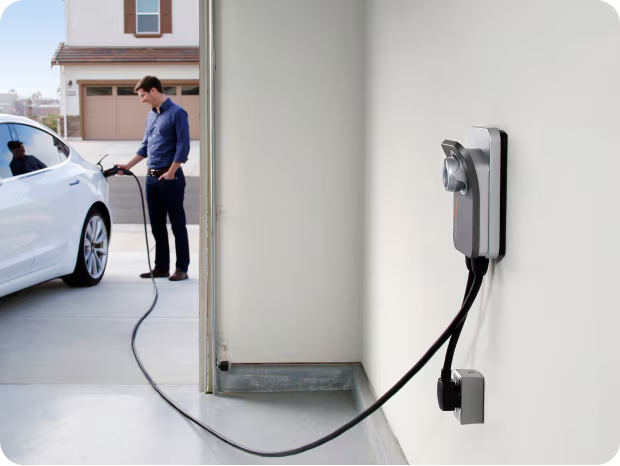
Hardwired Connection
For those looking for a more permanent installation, the Home Flex can be hardwired directly into your home’s electrical system.
This method typically requires a licensed electrician to ensure safe and compliant installation. Hardwiring can provide a cleaner look and may support higher charging rates, depending on your electrical setup.
The hardwired option is beneficial for homeowners who want to maximize charging speed and efficiency.
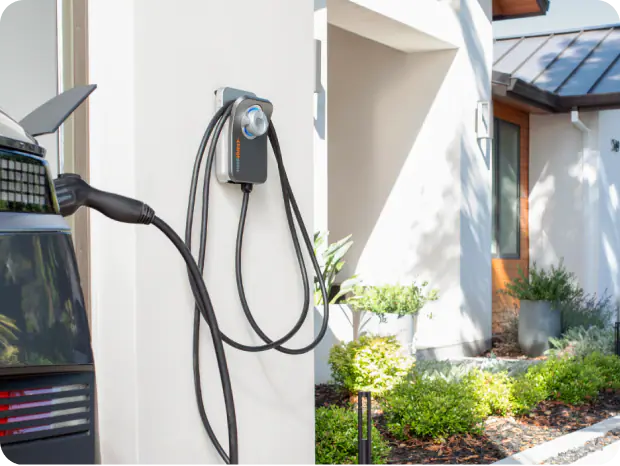
Wi-Fi Connectivity
Regardless of how you connect the charger, the Home Flex also features Wi-Fi connectivity. This allows you to connect it to your home network for enhanced functionality.
With Wi-Fi, you can monitor charging sessions, track energy usage, and even schedule charging times through the ChargePoint app on your smartphone. This feature adds convenience and control, making it easier to manage your EV charging at home.
Smart Features
The charger supports smart features such as remote start/stop, notifications about charging status, and the ability to see real-time energy consumption data.
These features are especially useful for optimizing your charging based on electricity rates, helping you save money on energy costs.
ChargePoint Install Instructions (Plug-In and Hardwired)
Plug-In Instructions
Choose the Location
- Select a location near your EV parking space that is also close to a NEMA 14-50 outlet.
- Ensure the area is well-lit and accessible for ease of use.
Check The Outlet
- Confirm that the outlet can handle the electrical load (40 amps for the Home Flex).
- The outlet should be properly grounded and comply with local electrical codes.
Plug In The Charger
- Take the charger and plug the NEMA 14-50 plug into the outlet.
Ensure that the connection is secure and that the charger is mounted or placed in a stable position.
Connect to Wi-Fi
- Download the ChargePoint app on your smartphone.
- Follow the in-app instructions to connect the charger to your home Wi-Fi network.
Test The Charger
- After connecting, test the charger by plugging in your EV.
- Check the app for charging status and settings.

Hardwired Instructions
Choose the Location
Similar to the plug-in version, select a suitable location near your EV parking spot.
Hire a Licensed Electrician
Contact a licensed electrician to perform the hardwired installation. They will ensure that the installation meets local codes and safety standards.
Electrical Panel Preparation
The electrician will determine the best way to connect the charger to your electrical panel.
They will install a dedicated circuit for the charger, typically a 40-amp breaker.
Wiring the Charger
The electrician will run the appropriate gauge wiring (usually 6 AWG) from the circuit breaker to the charger location.
They will connect the charger to the electrical supply, ensuring proper grounding.
Test The Connection
Once installed, the electrician will test the charger to ensure it operates correctly.
They will also help you connect the charger to your Wi-Fi network using the ChargePoint app.
How Do I Set Up The ChargePoint App?
Download the ChargePoint App
- Available Platforms: Download the ChargePoint app from the App Store (iOS) or Google Play Store (Android).
- Create an Account: Open the app and sign up for a new account if you don’t already have one. You’ll need to provide an email address and create a password.
Connect The Charger
- Plug-In Version: After plugging the charger into your NEMA 14-50 outlet, the app should automatically detect the charger. Follow the prompts in the app to confirm the connection.
- Hardwired Version: Once installed by a licensed electrician, you may need to manually add the charger in the app. Select “Add Charger” and follow the on-screen instructions.
Connect To The Wi-Fi
- Wi-Fi Setup: The app will guide you through connecting the charger to your home Wi-Fi network. Select your Wi-Fi network from the list and enter the password when prompted.
- Connection Confirmation: Once connected, the app will notify you that the charger is ready to use.
Set Charging Preferences
Amperage Settings: The ChargePoint Home Flex 2 allows you to adjust the amperage settings based on your home’s electrical capacity and your charging needs.
- Options: You can typically set the charger to draw between 16 to 50 amps, depending on your circuit capacity. The default setting is often 40 amps, which provides optimal charging speed for most EVs.
- Adjusting Amperage: To adjust the amperage, go to the settings in the app, find the “Amperage” or “Charging Rate” section, and select your desired level. Ensure that the setting aligns with your electrical panel’s capacity to avoid overload.
Amperage Tips
- 16 Amps: Approximately 3.8 kW – suitable for overnight charging of most EVs.
- 24 Amps: Approximately 5.7 kW – offers a quicker charging option for many EVs.
- 32 Amps: Approximately 7.7 kW – suitable for faster home charging, especially for larger battery EVs.
- 40 Amps: Approximately 9.6 kW – provides rapid charging for most EVs, allowing for more flexibility in charging times.
- 50 Amps: Approximately 12 kW – optimal for EVs with larger battery capacities that can handle faster charging.
Schedule Charging
- You can set up charging schedules within the app. This is particularly useful for taking advantage of off-peak electricity rates.
- Choose specific days and times for charging, and the charger will automatically start and stop according to your preferences.
Monitor Charging Sessions
- Use the app to monitor your charging sessions in real-time. You can see the current charging status, how much energy is being used, and the estimated time remaining to fully charge your vehicle.
Turn On Notifications
- The app allows you to receive push notifications about your charging status. This includes alerts when charging is complete or if there are any issues with the charger.
ChargePoint Safety Features
The ChargePoint Home Flex 2 EV charger is equipped with several safety features designed to protect both users and vehicles during the charging process. Here’s a breakdown of its key safety features
Overcurrent Protection
The charger includes built-in overcurrent protection, which prevents excessive electrical flow that could potentially damage the charger or your vehicle’s battery.
Ground Fault Protection
Ground Fault Circuit Interrupter (GFCI): The Home Flex 2 is designed to detect ground faults and will automatically shut off the power to prevent electric shock, enhancing user safety.
Overvoltage and Undervoltage Protection
This feature helps prevent damage to both the charger and the electric vehicle by shutting off charging if the voltage exceeds or falls below safe levels.
Thermal Protection
The charger monitors its temperature and will automatically reduce power or shut off if it becomes too hot, preventing overheating and potential fire hazards.
Cable Management
The design includes features to manage the charging cable safely, reducing the risk of tripping hazards and protecting the cable from damage when not in use.
Weather Resistance
With an IP55 rating, the charger is protected against dust and low-pressure water jets, making it safe for outdoor use in various weather conditions.
Secure Mounting Options
The charger can be securely mounted on a wall, reducing the risk of accidental disconnection or damage.
ChargePoint Customer Support
- Email: support@chargepoint.com
- Phone Number: 1-855-400-0025
- Website: www.chargepoint.com
Additional ChargePoint Support
- You can also visit the ChargePoint Support Page for FAQs, troubleshooting guides, and other resources.
- For more personalized assistance, the ChargePoint app also provides support features, allowing you to reach out directly from within the app.
ChargePoint Vehicle Compatibility
Including but not limited to:
- Tesla Models: Model S, Model 3, Model X, Model Y (with a J1772 adapter).
- Nissan: Leaf, Ariya.
- Chevrolet: Bolt EV, Bolt EUV.
- Ford: Mustang Mach-E, F-150 Lightning.
- Hyundai: Kona Electric, Ioniq 5, Ioniq Electric.
- Kia: EV6, Niro EV, Soul EV.
- Volkswagen: ID.4, ID. Buzz.
- Audi: e-tron, Q4 e-tron.
- Porsche: Taycan, Macan EV (upcoming).
- BMW: i3, i4, iX.
- Rivian: R1T, R1S.
- Lucid Motors: Lucid Air.

Article By: Dale Ogden
Dale is a recognized expert in the automotive industry, known for his expertise in automotive asset management and consulting.
As the founder of Check Your Spec and former Forecast Manager at CAP HPI (equivalent to Kelley Blue Book in the USA) he made significant contributions to the development of forecasting strategies and depreciation models for internal combustion engines, hybrid, and electric commercial vehicles in the UK.
With over two decades of experience, Dale pioneered EV forecasting models that are now used by leading manufacturers.
His work has also produced residual values for over 10,000 new vehicles.
ChargePoint FAQ
Difference between NACS and J1772
The NACS (North American Charging Standard) and J1772 (SAE J1772) connectors are two different charging standards used for electric vehicles (EVs) in North America. Here’s a detailed comparison highlighting the key differences between them:
1. Connector Design:
J1772 Connector:
- The J1772 connector features a circular design with five pins (two for power, one for ground, and two for communication).
- It is used widely across many EV manufacturers, including Nissan, Ford, Chevrolet, and Hyundai.
- The design ensures a secure connection and is easy to use, but it is limited to Level 1 and Level 2 charging only.
NACS Connector:
- The NACS connector, developed by Tesla, is a smaller, sleeker design that integrates both AC and DC charging capabilities.
- It has a single, compact connector with a unique pin layout that supports higher charging rates, including both Level 1, Level 2, and DC fast charging.
- The NACS connector allows for faster charging speeds and a more streamlined experience.
2. Charging Speed:
J1772:
- Typically supports Level 1 (120V) and Level 2 (240V) AC charging, which can provide charging speeds ranging from 1.4 kW (Level 1) to around 19.2 kW (Level 2) depending on the vehicle and the charging station.
- Level 2 charging is sufficient for most overnight home charging scenarios.
NACS:
- NACS can support both AC and DC fast charging, allowing for significantly higher power delivery (up to 350 kW or more) for DC charging.
- This results in much faster charging times compared to J1772, making it ideal for long-distance travel and quick top-offs.
3. Compatibility:
J1772:
- Widely compatible with nearly all electric vehicles on the market, including non-Tesla brands.
- The standardization of the J1772 connector has made it the go-to option for most public charging stations across North America.
NACS:
- Initially designed for Tesla vehicles, the NACS is now gaining traction as more manufacturers consider adopting it.
- As of 2023, some automakers like Ford, General Motors, and Rivian have announced plans to adopt the NACS standard, enhancing compatibility for their future EVs.
4. Communication Protocol:
J1772:
- Uses a specific communication protocol between the vehicle and the charger, which manages charging sessions and safety features.
NACS:
- Also has its own communication protocol, allowing for advanced features like charging speed adjustments, user authentication, and smart grid communication.
What Is the power rating of the ChargePoint Home Flex 2?
The ChargePoint Home Flex EV charger offers a versatile power rating, allowing users to adjust the charging speed based on their needs and electrical system capabilities. Here are the key details regarding its power rating:
Power Rating of ChargePoint Home Flex:
Adjustable Amperage:
- The ChargePoint Home Flex can be configured to operate at different amperage levels, specifically 16 amps to 50 amps.
- This flexibility allows users to choose a suitable charging speed based on their electric vehicle’s capabilities and the electrical infrastructure of their home.
Charging Power Output:
- At 240 volts, the maximum charging output for the Home Flex is up to 12 kW when set to 50 amps.
- At lower amperage settings, the power output decreases accordingly:
- 16 amps: Approximately 3.8 kW
- 24 amps: Approximately 5.8 kW
- 32 amps: Approximately 7.7 kW
- 40 amps: Approximately 9.6 kW
- 50 amps: Approximately 12 kW
Level 2 Charging:
- The Home Flex is a Level 2 charger, meaning it is designed for faster charging compared to Level 1 chargers. It significantly reduces charging time, making it ideal for overnight or quick charging sessions.
Can I use ChargePoint Home Flex without WiFi?
Yes, you can use the ChargePoint Home Flex EV charger without Wi-Fi. While having a Wi-Fi connection enhances the functionality of the charger, allowing you to access advanced features through the ChargePoint app, it is not strictly necessary for basic operation. Here’s what you need to know:
Basic Charging Functionality:
- The ChargePoint Home Flex can function as a standard Level 2 charger, providing power to your electric vehicle without a Wi-Fi connection. You can simply plug in your vehicle and start charging.
App Features Limited:
- Without Wi-Fi, you won’t be able to access app features such as:
- Monitoring charging sessions in real time.
- Scheduling charging times.
- Receiving notifications about charging status.
- Adjusting charging settings remotely.
- You can still set the amperage level directly on the unit itself, but you won’t be able to change settings via the app.
- Without Wi-Fi, you won’t be able to access app features such as:
Data Logging:
- The charger logs charging sessions and usage data, but without Wi-Fi, this information won’t be uploaded to your ChargePoint account or app. This means you won’t have access to your charging history or usage analytics.
Can you charge a Tesla with a ChargePoint home charger?
Yes, you can charge a Tesla with a ChargePoint Home Flex charger. Here are the key points to consider when using the ChargePoint charger with a Tesla vehicle:
Charging a Tesla with ChargePoint Home Flex:
Connector Compatibility:
- The ChargePoint Home Flex comes with a J1772 connector, which is the standard connector used by most electric vehicles, including many non-Tesla brands.
- Tesla vehicles can be charged using the J1772 connector by utilizing a J1772 to Tesla adapter. Tesla provides this adapter for free with their vehicles, allowing you to charge at any J1772-compatible charging station.
Charging Speed:
- The charging speed will depend on the amperage setting you choose on the ChargePoint Home Flex and the capabilities of your Tesla:
- At 50 amps, the ChargePoint Home Flex can provide up to 12 kW, resulting in faster charging times.
- At lower amperage settings (e.g., 32 amps or 24 amps), the charging speed will be reduced accordingly.
- The charging speed will depend on the amperage setting you choose on the ChargePoint Home Flex and the capabilities of your Tesla:
Level 2 Charging:
- The ChargePoint Home Flex is a Level 2 charger, which is ideal for home charging. It offers faster charging compared to a standard Level 1 charger, making it a convenient option for Tesla owners who want to charge their vehicles overnight or during the day.
Easy Setup:
- Setting up the ChargePoint Home Flex for Tesla charging is straightforward. You simply need to connect the J1772 plug to your Tesla using the appropriate adapter, plug the charger into a compatible outlet or have it hardwired, and start charging.
Smart Features:
- If connected to Wi-Fi, the ChargePoint Home Flex offers smart features through the ChargePoint app, allowing you to monitor charging sessions, schedule charging times, and receive notifications.
Does ChargePoint require a subscription?
No, the ChargePoint Home Flex charger does not require a subscription to use. Once you purchase the charger, you can use it for basic charging functions without any ongoing costs. However, there are additional features and benefits that you can access through the ChargePoint app, which do not require a paid subscription but enhance the charging experience.
Key Points About Subscription and Features:
No Subscription Required for Basic Use:
- You can plug in your EV and charge it using the ChargePoint Home Flex without needing any subscription.
- The basic charging functions, such as adjusting the amperage and starting a charge, are available without additional costs.
ChargePoint App Features (No Subscription Required):
- The ChargePoint app offers several free features, including:
- Monitoring your charging sessions remotely.
- Scheduling charging to take advantage of off-peak electricity rates.
- Tracking your energy usage and savings.
- Locating public ChargePoint stations if you charge outside of home.
- These features are accessible as long as you have a Wi-Fi connection for the charger, but there is no paid subscription involved.
- The ChargePoint app offers several free features, including:
Public Charging Network (Pay-As-You-Go):
- If you use ChargePoint’s public charging stations, you don’t need a subscription, but charging at public stations is typically billed on a pay-as-you-go basis.
- You may pay per session or based on the amount of electricity you use at public ChargePoint locations, depending on the station’s policies.
How do I pay for ChargePoint charging?
If you’re trying to find out the exact specifications of your car using the VIN number, it’s important to know that VIN checks alone won’t give you that level of detail. VIN checks typically provide information like the vehicle’s history, registration details, and sometimes basic manufacturer descriptions, but they don’t dive into the specific features or options that were included when the car was built.
Similarly, registration numbers won’t get you much further, as they mostly offer the basic manufacturer’s description, without the finer details.
To access the full vehicle specs by VIN, you’ll need to speak with a dealer who has access to the manufacturer’s database. Generally, you must be the car’s owner and visit the dealer in person to get this information. They can pull up the exact specifications from their in-house systems, giving you a complete picture of your vehicle’s build and options.
What is the maximum kW for ChargePoint?
The maximum charging power for the ChargePoint Home Flex is 12 kW. This output is achievable when the charger is set to its highest amperage (50 amps) and connected to a 240-volt circuit.
Here’s a breakdown of the maximum kW output based on different amperage settings:
ChargePoint Home Flex Power Output:
- 16 amps: ~3.8 kW
- 24 amps: ~5.8 kW
- 32 amps: ~7.7 kW
- 40 amps: ~9.6 kW
- 50 amps: ~12 kW (maximum output)
To achieve the maximum 12 kW, your home electrical system must be able to support a 50-amp circuit, and the charger must be configured for that amperage. This allows for faster charging times, particularly for larger battery EVs.




